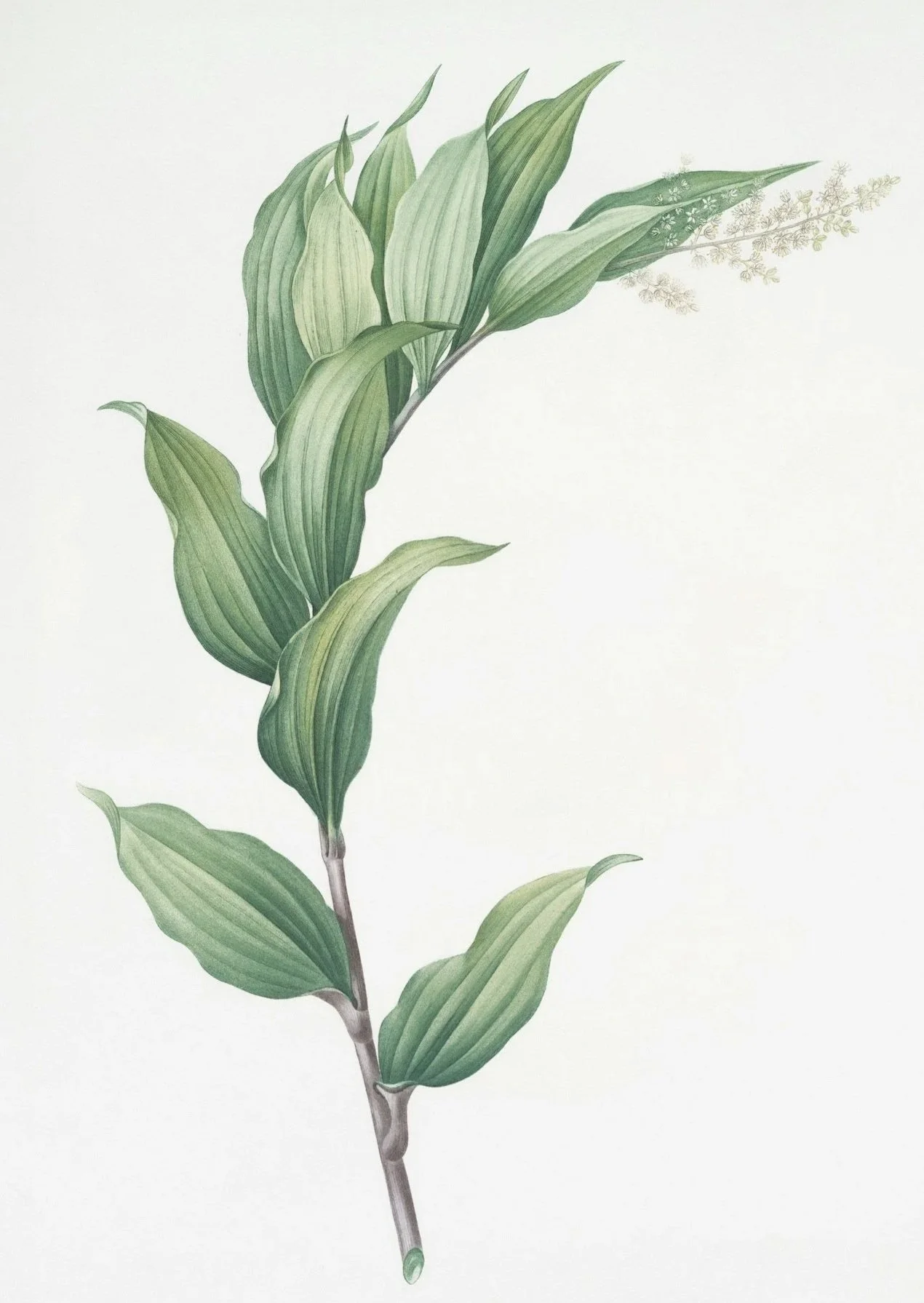There’s also the “true" solomon’s seal (Polygonatum spp.) that has similar medicinal qualities. I use their knobby rhizomes interchangeably. I’ve heard that False Solomon’s seal has an affinity for the fingers, and is a native to our Pacific Northwest ecology.
When I come across this species, I propagate its rhizome wherever I go. It’s one of my favorite plants, and I always want to make sure I’m leaving more than I take to not endanger our native populations. It’s also one of the more mysterious of plants. Science hasn’t caught up to the traditional uses yet, so we don’t know how it works, but it works. I also like to tincture the rhizome for internal use, and I find that works really well too.
Native Americans and herbalists use the rhizome internally for arthritis and ligament issues originating from dryness (which can often lead to hot inflammation and swelling). Topically, it has a local effect of lubricating joints and tendons and promoting properly healed tissue. It also seems to help modulate and restore tension to the ligaments and treat most injuries to the musculoskeletal system.
From herbalist Jim McDonald: “Matthew Wood speculated that Solomon's Seal might stimulate the body to produce cortisone, and my current belief is that it acts on the synovial glands, improving the production or quality of synovial fluid in some way and thus lubrication in the joints.”
False Solomon’s Seal
Maianthemum racemosum
Polygonatum biflorum flowers hang under the arched stem
Maianthemum racemosum flowers at the end of the stem
Some interesting studies
https://www.researchgate.net/publication/361629320 - Investigation ofof wound healing properties of Polygonatum
https://www.researchgate.net/publication/287343863 - More wound healing evidence


